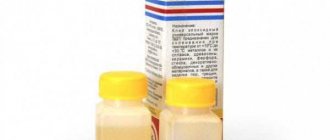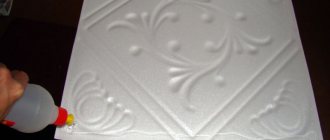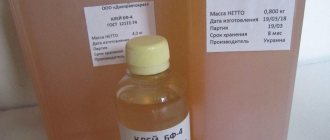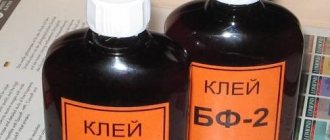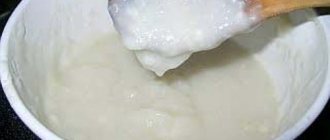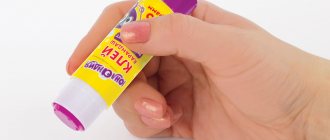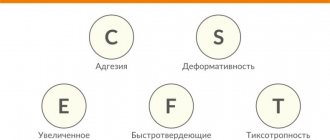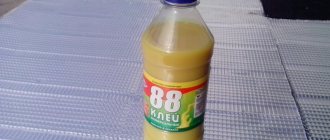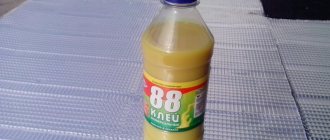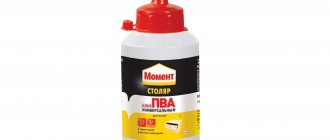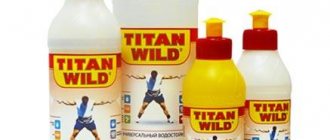Epoxy resin is an oligomer that has a fairly wide range of applications. So, it is used for pouring floors. In addition, it can also be used in needlework to create hundreds of a wide variety of crafts. The most popular example of this component is two-component epoxy adhesive. The composition is characterized by exemplary quality and a high degree of adhesion when working with a large number of materials.
- Types and scope of application of EDP glue
- Two-component fast-curing epoxy adhesive
- Specifications
- Using EDP glue: instructions
- Surface treatment
- Epoxy dilution
- Gluing process
- Final stage
- Be careful!
Epoxy adhesive EDP is an adhesive composition that is used for repair and restoration of various coatings. In order to study in detail the characteristics and rules for using the adhesive mixture, this publication discusses:
- features of two-component epoxy adhesive;
- scope, advantages and disadvantages;
- detailed instructions for breeding and using EDP in practice.
Scope of application
The composition is produced in vials or syringes. The second form of release is more convenient, as it is easy to use and the application weight is controlled.
EDP glue is used for the following surfaces: wood, ceramic, porcelain, metal and other finishing materials.
The surfaces on which EAF was applied should not be used for food purposes.
Being in a liquid state, fabric, paper and other materials that are necessary for use in shipbuilding, machine tool building, etc. are impregnated with glue.
In everyday life, EDP glue is used for the restoration of bathtubs made of cast iron and steel, plumbing fixtures, and for sealing damage to rubber products - boats, mattresses, etc.
Epoxy adhesive EDP - features and areas of use
EDP glue has a unique composition due to which it is actively used for filling flooring in niches, for restoring and giving a more aesthetic appearance to plastic products. Due to its attractive appearance after hardening, it is actively used in handicrafts and the decoration of stone structures. After drying, the composition forms a smooth, elastic seam.
Epoxy EDP is sold in two forms:
- Liquid consistency, requiring dilution before use;
- In the form of plasticine blocks, which are kneaded and distributed over the plane before use.
If the composition contains solvents, then the adhesive begins to harden at room temperature. The substance is used in various household and industrial areas. When repairing furniture, plumbing, various types of electrical devices, when fixing sports equipment and decorating surfaces made of fiberglass and other materials. In industry, epoxy EDP glue can be found in car repair shops when repairing car bodies, at boat stations or when restoring stone sculptures.
EDP glue has a unique composition due to which it is actively used for pouring floor coverings.
Properties and technical specifications
Edp glue is sold in plastic packaging, plus a bottle of hardener. In appearance, it is a transparent binder mass without a hint of any impurities. The composition dries quite quickly, in about a quarter of an hour. Because of this feature, before the process, the parts are first prepared and only then the glue itself. After drying, the joints can be processed (sanding, polishing, filing, painting). The recommended temperature in the room where the gluing process is carried out is 20-25 degrees.
EDP epoxy resin does not shrink after drying. It is characterized by increased resistance to mechanical stress. It has excellent adhesion to almost any type of material. According to their properties, they are classified as dielectrics, that is, substances that do not allow current to pass through. Additionally, the joints are waterproof.
Edp glue is sold in plastic packaging, plus a bottle of hardener.
Instructions for use
EDP glue must be used according to the instructions for use. It provides important points: mixing with the hardener is permissible immediately before use, as a rapid hardening process will begin. It is also worth diluting in portions. Large quantities will harden before they are completely used.
Breeding process:
- The bottle with EDP glue is placed in hot water (50–70 degrees).
- Leave for up to 10 minutes.
- According to the proportion (1:10) given in the instructions, mix the resin and thickener.
- The mixture is stirred for three minutes.
- Leave for up to 8 minutes for air bubbles to escape.
- The resulting composition is consumed in an hour, an hour and a half. Further use is ineffective, as the composition will thicken and spoil the quality of the seam.
DBH
If it is necessary to impart specific properties to plastic, then fillers are used for this; in this short article we will try to address this issue. All kinds of materials are used as fillers, such as chalk, alabaster, cement, sawdust, and metal powder. The volume content of filler in EDP glue can reach up to 50% (in this case, the adhesive mixture loses its fluidity). A filler share of 30-40% is considered the most optimal. This ratio makes it possible to obtain the final polymer with the required properties; the consumption of epoxy is reduced, while at the same time maintaining the required level of fluidity. Cement must be used in the manufacture of injection molds. This polymer is very durable. In order to get a good result, you must first sift it through cheesecloth to remove lumps. Alabaster is generally worse than cement, but is also quite suitable as a filler. Chalk is acceptable as a filler, but has a negative property - hygroscopicity; the presence of water in epoxy adhesive can lead to partial curing or not curing at all. For this reason, it is better to avoid using chalk. Wood chips (sawdust). Low specific gravity allows the production of plastic with a lower specific gravity than that of the original adhesive mixture. As in the case of chalk, it is necessary to prevent the sawdust from accumulating moisture. Aerosil gives the epoxy thixotropy - that is, the ability to reduce viscosity (that is, become more liquid) under mechanical stress and increase viscosity (thicken) at rest, thus preventing smudges. Microsphere. Microscopic hollow balls filled with gas in the form of a fine-grained powder. Having low density and weight, it makes the adhesive mixture airy and increases viscosity. Foamy material is converted in large volumes. Ideal for epoxy putties, putties, where joint filling properties are required. A polymer with such an additive lends itself well to grinding, and this property is directly dependent on the fraction of microsphere content; the more it is, the easier the polymer is to grind. At the same time, its excess quantity reduces the strength of the adhesive seam. Fibers. They make the epoxy more viscous when gluing. Fills gaps well and impregnates the surface. You can use any fiber from glass to cotton. Pigments allow you to add the necessary color to epoxy resin for decorative purposes, and also impart additional properties due to their nature, some of the pigments: • Graphite powder - a fine-grained black powder, imparts rigidity to the surface, and is a conductor of electric current. Surfaces treated with resin with graphite powder are not recommended for use in the sun. • Aluminum powder gives the resin a metallic gray color and improves the workability of the plastic. • White color can be achieved using Titanium Dioxide. • Marble chips, diabase and other mineral additives give the plastic the external properties of a specific additive, this allows you to make very beautiful products, as if “from stone”. In addition, this type of filler makes the plastic more durable and heavier. Fillers make it possible to obtain a high-quality solid polymer with certain properties, but you should be aware that in some cases this can lead to increased fragility of the plastic. By adding liquid plasticizers (for example, castor oil) you can reduce the brittleness and increase the ductility of the final polymer. The plasticizer content can only be determined experimentally for each specific case and, as practice shows, this value is no more than a few percent.
Precautionary measures
When working with EAF glue, the following precautions must be observed:
- The room where work is carried out must be well ventilated and have a working ventilation system.
- It is mandatory to use protective products for the skin and respiratory tract.
- If the composition gets on the skin epithelium, rinse with running water and wipe with alcohol. In case of contact with eyes, consult a doctor immediately.
- Mixtures and formulations are stored in residential premises in dark, dry places inaccessible to children. Pre-closed tightly. If the remaining composition does not require further use, then it is disposed of.
- When using solvents, work should be carried out away from open sources of fire.
- The containers in which the mixtures are mixed are practically not washed off from the dried composition.
Specifications
EDP epoxy adhesive has some technical characteristics that must be taken into account when using the material. Among them, the following deserve special attention:
- Excellent mechanical strength. The adhesive seam from EAF will not collapse even under active mechanical stress.
- Low shrinkage. Allows you to accurately calculate the thickness of the seam when gluing parts.
- Excellent compatibility with most materials.
- Electrical insulation ability. A material such as EAF glue is positioned by manufacturers as a dielectric.
- Resistant to water and damp environments. The created adhesive seam will have waterproof properties.
- Post-processing compatible. When the adhesive joint has completely cooled, it can be processed. In particular, it withstands sanding, polishing, sawing and painting.
Types of epoxy glue
Depending on the scope of application, industrial material comes in various varieties.
The composition of the substance is:
- one-component transparent, consists of resin and solvent, hardens well at all temperatures except low temperatures, therefore requires warming up before use, is available in small packages (sealed tubes) and syringes;
One of the types of adhesive Source alibuy.uz
- two-component, this type is represented by two tubes, one of which contains resin, and the other contains a liquid or powdered hardener. Before carrying out work, mix the two components. The amount of mixture is adjusted individually.
According to the final consistency, the glue is:
- liquid;
- plastic.
The amount of liquid substance can be easily adjusted by squeezing it out of the tube. The plastic mass resembles plasticine, the required amount of which is cut off and kneaded with water to form a paste.
According to the method of hardening (individual setting time), the glue can be:
- instant (2 min);
- medium quality (up to 10 min);
- regular (30 min).
Popular brands of epoxy glue include “Novocolor”, “Contact”, “Class”, “EDP”, “Moment”, “Secunda”, “Ultima”, “Cold Welding”, “Abro”, etc. The product can be purchased at an affordable price prices not only in construction stores, but also in any markets.
Preparation of the adhesive composition
The instructions provided indicate that the EAF is prepared exclusively before starting work. Mixing occurs at a ratio of 10:1 (epoxy resin to hardener).
To properly prepare the adhesive composition you need:
- heat the bottle with resin to a temperature of 50-70C, lowering it into warm water;
- wait ten minutes;
- use the glue components in small proportions, taking ten parts of resin per one measuring part of the thickener, adhering to the paper scale on the jar;
- mix everything thoroughly for about 3-5 minutes;
- work with the composition within two hours from the moment of preparation, otherwise it will thicken and the quality of the seam will be spoiled.
Main characteristics
The technical characteristics of the glue are as follows:
- — externally it is a viscous liquid of yellowish or light brown color without solid particles and volatile impurities;
- — the tensile strength under normal conditions is at least 8 megapascals;
- - time until complete hardening is one and a half hours at room temperature;
- — suitable for working with almost any materials;
- — not sensitive to all types of chemical and mechanical influences.
Such operational parameters allow the glue to rightfully rank among the leaders among connecting materials. The substance is used according to the following scheme:
- 1. Clean the surfaces to be joined from all foreign objects and degrease using a special compound. There should also be no hangnails or flaking particles. If there are any, polish the surface with sandpaper.
- 2. Apply glue to both surfaces, then press them firmly together for several minutes. Then leave them at rest for 5-10 hours, depending on the external environmental conditions.
- 3. Hardened particles of excess glue are carefully removed mechanically using a knife or other suitable tool.
The adhesive is not suitable for repairing products that will come into direct contact with food. For these purposes, you need to use a special composition. Otherwise there are no restrictions on use. The glue is well suited for subsequent painting with any type of paint. Without coloring, after hardening it acquires a rather pleasant-looking brownish tint that will not change under the influence of time and other factors.
It is, of course, better to purchase material at a specialized point of sale. The average price of EDP glue is 250 rubles per 100 grams. The amount is quite impressive, but given the quality of the material, it can be called fair.
Features of EAF
What is unique about universal epoxy EDF adhesive? In addition to high strength, EDP epoxy adhesive is the ideal option for most cases. This is due to the fact that it can be used to connect materials that are completely different in structure and composition, examples of which can be seen in the photo. It can be metal, plastic, glass, wood and many others.
In other words, there is no need to look for glue designed for one specific material. The only thing to remember is the restrictions regarding dishes and other elements that, one way or another, come into contact with food. Otherwise, this solution is truly universal.
Applying glue
When using fabric as a reinforcement layer, it is applied to the surface to be repaired and then evenly covered with a layer of adhesive.
Reapplying the layer, if required, is possible after twelve to twenty minutes. “Without laying the adhesive fabric, the adhesive is applied in a thin layer on both surfaces to be joined. Then they are firmly fixed with a vice or other heavy objects.
The remaining glue should be removed immediately, as it will be difficult to do this later after it has hardened.
Leave the items fixed until completely hardened.
Transportation and storage
EDP glue is transported only in accordance with the rules specified by GOST.
The storage area must be dry. Storage temperature ranges from +5 to +30C for original packaging. Protect from moisture and direct sunlight. Store for no more than two years.
Use in excess of storage standards is allowed, but the quality may be reduced.
Properties and scope
The popularity of epoxy is determined by its positive qualities.
The epoxy adhesive mixture exhibits the following properties:
- forms a non-shrinking seam without cracks;
- high adhesion to various materials;
- resistance to chemical solvents, alkalis and oils;
- heat resistance up to +250 degrees;
- frost resistance up to -20 degrees;
- resistance to mechanical stress;
- elasticity allows you to drill and grind the seam without chipping;
- cured glue can be painted and varnished;
- does not conduct electric current;
- the curing speed does not depend on the thickness of the adhesive layer;
- the ability to add additional components to the composition;
- moisture resistance;
- weather resistance;
- wear resistance.
Adding asbestos increases heat resistance and hardness. Titanium dioxide gives a white color to the entire solution. Iron oxide will help achieve red color and fire resistance. Iron powder will increase the coefficient of thermal conductivity and heat resistance. Silicon dioxide will reduce the viscosity and strengthen the epoxy mixture. The soot will give the glue a black color. Aluminum oxide will increase the strength and dielectric properties. Glass fibers and sawdust will add significant volume when filling large voids.
The downside to using epoxy glue is the setting speed. In a short period of time, you need to apply and fix the adhesive seam, remove excess glue and clean the work area and hands. After the adhesive composition has hardened, removal is carried out only with strong mechanical force. The sooner you start cleaning up adhesive epoxy, the easier it is to clean the stain with minimal effort.
The epoxy mixture should not be used to glue objects that come into contact with food. Nickel, tin, Teflon, chrome, zinc, polyethylene, silicone cannot be glued. Soft materials are destroyed when in contact with a resin-based composition.
Due to the large number of unique properties, the adhesive epoxy mixture is widely used in various sectors of the national economy. Epoxy grout is used in a variety of applications.
- In the construction industry. The adhesive composition is used to fill cracks in concrete, cement screeds, reinforced concrete beams and slabs, further strengthening the entire structure. Used to connect iron and concrete elements in bridge construction. Sections of building panels are glued with epoxy. It imparts waterproofing properties to insulation and chipboard, reduces heat loss, creating a seal in the sandwich panel. During finishing work with tiles and mosaics, an epoxy mixture is used as an adhesive solution, which hardens quickly and has moisture-repellent properties.
- In the automotive industry. In production, brake pads are secured with epoxy glue, plastic and metal surfaces are held together, and used in automotive repair work for metal and plastic. It helps to repair defects in the body and gas tank, and restore the trim.
- In the production of ships and aircraft. During the construction of water vessels, the hull is treated with an epoxy compound to impart water-repellent properties to the material; it is used to connect fiberglass parts and fasten technological units. When assembling aircraft, heat-shielding elements are attached with epoxy glue. Epoxy is used to produce and fix solar panels.
- At home. Using epoxy glue you can repair furniture, shoes, plastic, metal and wooden decorative parts and equipment. You can repair the crack in the aquarium and collect the fragments of a glass vase or lampshade. Epoxy will glue chips of porcelain tiles and seal gaps in ceramic tiles, securely attaching hooks and holders to the wall. The epoxy composition is suitable for sealing sewer and water pipes, heating elements. Epoxy is widely used in handicrafts to create crafts and souvenirs. It is used for attaching decorative elements in the manufacture of jewelry and hair accessories. Sequins, half beads, satin ribbons, lace, polymer clay and other materials are glued.
How long does it take to dry?
It is not possible to immediately determine how long epoxy glue dries. The drying process is influenced by many factors, including ambient temperature, the ratio of the main components in the composition, and the influence of additional factors. For example, mixing epoxy resin with a higher proportion of hardener will speed up the drying process. Also, with additional heating, the hardening speed increases after the glue sets. In order for the glue to dry faster and the drying time to be reduced, the temperature should be increased as much as possible. Complete hardening is determined depending on the type of glue. "Cold weld" can cure in 5-20 minutes. There is also an epoxy universal class of glue such as EDP, which thickens in an hour, regardless of the actions taken, sets after 2 hours, and completely hardens after a day.
Nuances of using EAF
Considering the fact that the prepared composition hardens very quickly, the part or surface that will be restored must be prepared in advance. The preparation process includes cleaning the surface from dust and dirt. Among other things, to ensure the best adhesion, it is recommended to use a cloth. This could be fiberglass, gauze, or other fabric you have on hand.
When everything is ready, you can prepare a small amount of the mixture and apply it to the surface. Next, a piece of fabric is placed on top of the first layer, which will provide a kind of reinforcement, after which another layer of the mixture can be applied. In order for the composition to completely dry and the part to be used, you usually need to wait no more than an hour, but there are some exceptions, which will be discussed a little later.
Glue composition
EDP glue is based on epoxy resin. This substance is the component that gives the product its main properties. In addition to resin, the adhesive contains a hardener and additives that improve technical qualities.
The package contains the base substance and a bottle of hardener. Both compounds must be combined before use.
Contents of the EDP glue package
Universal two-component adhesive – a product of chemical processing. The product has a complex composition. After mixing the glue with the hardener, a chemical reaction occurs, as a result of which the substance acquires working properties.
The composition of the product depends on its purpose and area of application. Solvents and plasticizers can be added to the mixture. The following chemicals are used as a hardener:
- polymers (organosilicon resins, rubbers);
- diamines;
- aminoamides;
- polyamines.
The ratio of components must be observed. Increasing the amount of hardener leads to a decrease in performance qualities.
Main features of the substance
Fast-curing epoxy adhesives quickly polymerize after adding a hardener to the base composition. The hardened mass has the following qualities:
- frost resistance (the mass can easily withstand temperatures down to -20⁰С);
- heat resistance (temperature limit at which the glue retains adhesion: up to +250⁰С);
- good ductility and elasticity, which ensures a high level of gluing strength;
- resistance to aggressive environments (acids, alkalis, oils, petroleum products, household chemicals);
- low shrinkage;
- water-repellent properties and high waterproofing performance;
- excellent interaction with almost all materials.
But you should also be aware of some of the disadvantages of such glue. For example, not all surfaces can be glued together - epoxy cannot bond Teflon, silicone and polyethylene . Take into account the accelerated polymerization time, so if there are flaws during gluing, it will be very difficult to remove them later.
Epoxy glue becomes completely safe only after it has completely cured. Before polymerization, it is toxic and harmful to health. This quality requires compliance with personal safety measures when working.
Glue does not work with all materials
Where is it used?
Due to its high technical qualities and versatility, epoxy adhesive is actively used in a variety of sectors of modern industry. Namely:
- in construction, to connect reinforced concrete structures and panels, glue is used to fill cracks and potholes in concrete, and it is used to lay tiles;
- shipbuilding uses an adhesive substance when installing and assembling ship parts made of fiberglass, plastic and metal; the substance is also used to improve the waterproofing qualities of materials;
- aviation (design), used for gluing various parts, manufacturing and installation of batteries, additional fixation for heat protection;
- mechanical engineering uses epoxy adhesive for mounting equipment, fastening brake pads and various parts when assembling machines, for various repairs.
Types of glue
Experts distinguish two large groups of adhesive epoxy composition. This:
- Liquid. Packaged in tubes. This form of release is convenient and easy to use.
- Plastic bars. Its consistency is similar to plasticine or dough. Also available in tube packaging. After squeezing out, the mass is slightly moistened with water and softened by hand.
Various modified formulations can also be found on sale. The temperature regime for polymerization of such modifications ranges from +60–120⁰С. Such adhesive substances are used for gluing various materials that are resistant to solvents, petrochemicals and oils.
Particularly strong in the line of epoxy adhesives are hot-curing masses (polymerization occurs at a temperature of +140–300⁰С). These modifications are characterized by high heat resistance and electrical insulation characteristics.
Several brands of epoxy glue are common in household and home use. They are recognizable and familiar to almost everyone:
- universal glue Moment;
- Contact intended for sealing pipes, repairing plumbing;
- Cold welding adhesive is intended for gluing metal products.
Is epoxy glue harmful to health?
When working with epoxy-based adhesive, you should be aware that it poses a health hazard. When working with it, the use of personal protective equipment becomes mandatory: gloves, respirator mask and goggles . If the adhesive mass gets into the stomach, a person runs the risk of serious poisoning, and contact with the skin leads to the development of allergic reactions.
Epoxy glue should not be used when gluing dishes and other items in contact with food.
Kinds
The main characteristics by which epoxy adhesive is classified include the following:
- compound;
- consistency;
- curing method.
It can be of two types in composition.
- One-component adhesives use liquid or solvent resin. The product is packaged in tubes and is ready for use without preparation. It is used for gluing small parts or sealing gaps.
- Most often, epoxy glue is two-component. It is sold as a kit, which includes two tubes. One tube contains resin in paste form, the second contains a hardener in liquid or powder form. The contents of the two tubes are mixed and used immediately, since after some time the mixture loses its ability to stick together. Most manufacturers produce two-component glue. Its application is almost universal.
There are two types of glue consistency.
- Liquid glue has the appearance of a gel. It saves time as it does not need to be prepared, and is also convenient for application to the surface.
- The plastic mass will have to be prepared. To do this, cut off the required amount from the contents of a cylindrical tube or bar, knead it with your hands and moisten it with water. The plastic mass is great for repairing chips, holes, and other defects.
The curing method divides adhesives into the following types:
- in the first, curing occurs at room temperature;
- the second must be heated before introducing the hardener.
Fast curing EDP adhesive
This product is produced in packages of 45/250 g and is two-component. The first bottle contains epoxy and a number of modifiers, the second bottle contains a hardener. Purpose of fast-curing adhesive:
- connection of composite and metal products, objects made of alloys, ceramics, glass, and other materials,
- repair and sealing of devices,
- sealing chips, defects, cracks.
Typically this type of EAF adhesive is used when fast curing is required. The product replaces cold welding.
Advantages of glue
The adhesive composition has the following advantages:
- ensuring the required level of strength 6 hours after application,
- work at a temperature of 10-30 degrees,
- low labor intensity of the process, the ability to process the adhesive seam even before the end of complete polymerization.
Application of fast-curing EAF
Before use, surfaces should be carefully prepared - cleaned, degreased, and dried. To improve adhesion, sandpaper is used. The bottle with resin is placed in water at a temperature of 60 degrees for 8 minutes. 1.5 parts of epoxy are mixed with 1 part of hardener, the resin lifetime is 30 minutes. You can use any fillers - cement, chalk, alabaster, fibers, graphite in a volume of up to 20%. The composition is applied in a thin layer to both surfaces, connected and pressed. Leave the product in the fixed position for 6 hours. Afterwards it is completely ready for use.
EDP glue universal epoxy two-component
Before introducing the hardener into the solution, it is allowed to mix pigments that help give the hardened layer a more attractive appearance; you can experiment with shades at your personal discretion; the range of colors is very diverse.
If you maintain the temperature in the work room at 18-25 degrees, the task assigned to the professionals by the customer will have to be completed in 4 hours.
After this time, the layer hardens; changes can only be made by mechanically treating some areas. The tensile strength is 8 MPa, this indicator was tested by shifting the surface from the metal base.
